Football is embedded in Brazilian culture.
Whilst there was once a mystique surrounding the footballing personnel of South America’s largest country for the rest of the world, nowadays, there is a strong contingent of players playing in Europe’s elite divisions, most notably in the Premier League.
Brazil is a footballing nation in transition at present, with up-and-coming youngsters making the step up to Brazil’s first team.
Despite the reasons for optimism for the future, though, Brazil is currently negotiating a difficult period.
Although automatic qualifiers for the upcoming Copa América, Brazil are struggling within their respective World Cup qualifying group.
Following three consecutive defeats, the five-time World Cup winners lie sixth in their respective group, lagging behind Venezuela and Ecuador.
Consequently, veteran manager Dorival Júnior was appointed in January and tasked with changing the fortunes of this proud footballing nation.
The journeyman manager has overseen two friendlies so far, which included a victory over England and a draw with Spain.
In this Brazil tactical analysis and scout report, we will assess Brazil’s chances in the upcoming Copa América, in which they have been drawn in Group D alongside Colombia, Paraguay, and Costa Rica.
We will assess the tactics likely to be adopted by Dorival and provide an analysis of the selected squad.
Brazil Predicted starting XI
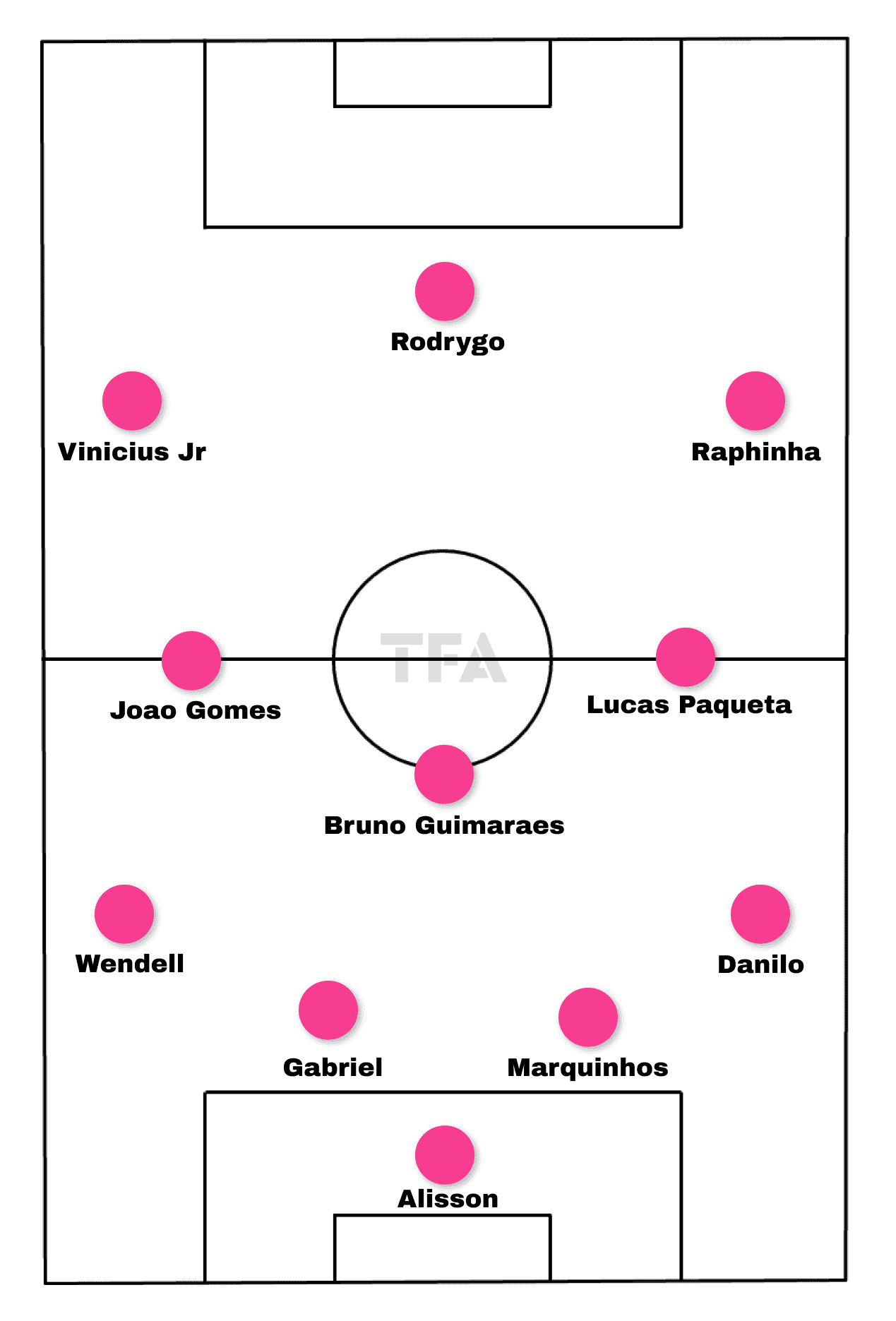
By his own admission, Dorival is not a coach who likes to instill a particular tactical identity into his sides but rather bases his tactics on the available playing personnel.
The recent friendlies in March gave a glimpse of what to expect from this Brazil side under the 62-year-old’s guidance.
Therefore, don’t be surprised to see the Seleção line up in a 4-3-3 formation.
Brazil has arguably the world’s best in goal to choose from in Liverpool’s Alisson and Manchester City’s Ederson.
Although neither goalkeeping option was available for selection in March due to injury, historically, Alisson has won the battle for the goalkeeper gloves.
This and Ederson’s recent withdrawal due to injury mean you would expect the Anfield man to retain his position in the starting XI.
The back four of this predicted team comprises the more experienced individuals of this squad: Juventus’ Danilo at right-back, Porto’s Wendell at left-back, and a centre-back partnership of PSG’s Marquinhos and Arsenal’s Gabriel.
Real Madrid’s Eder Militao may push for a start ahead of Marquinhos and Gabriel, although this does seem unlikely given that he has only just returned from an ACL injury.
Girona’s Yan Couto could equally push Danilo for the starting right-back position; however, the latter’s experience ensures he is more likely to be given the nod in the starting setup.
A surprising omission from the Brazil squad was the usual captain, Casemiro.
The Manchester United midfielder had been called up in March despite a poor season at Old Trafford this term but had to pull out due to injury.
In his absence, Bruno Guimarães will be expected to lead the three-man midfield alongside Wolves’ promising youngster João Gomes and West Ham’s Lucas Paquetá.
With usual poster boy Neymar injured, completing the predicted starting XI is a La Liga contingent of Real Madrid duo Rodrygo and Vinicius Jr and Barcelona’s Raphinha.
However, you would expect rotations in these positions, notably with teenage sensation Endrick and fellow youngster Sávio looking to grasp an opportunity.
Endrick, in particular, has been impressed by the recent friendlies.
However, given his age, it may be a tall order to expect him to start each match of the tournament.
The graphic below shows a breakdown of the predicted Brazil squad, which highlights that this is a very young squad.
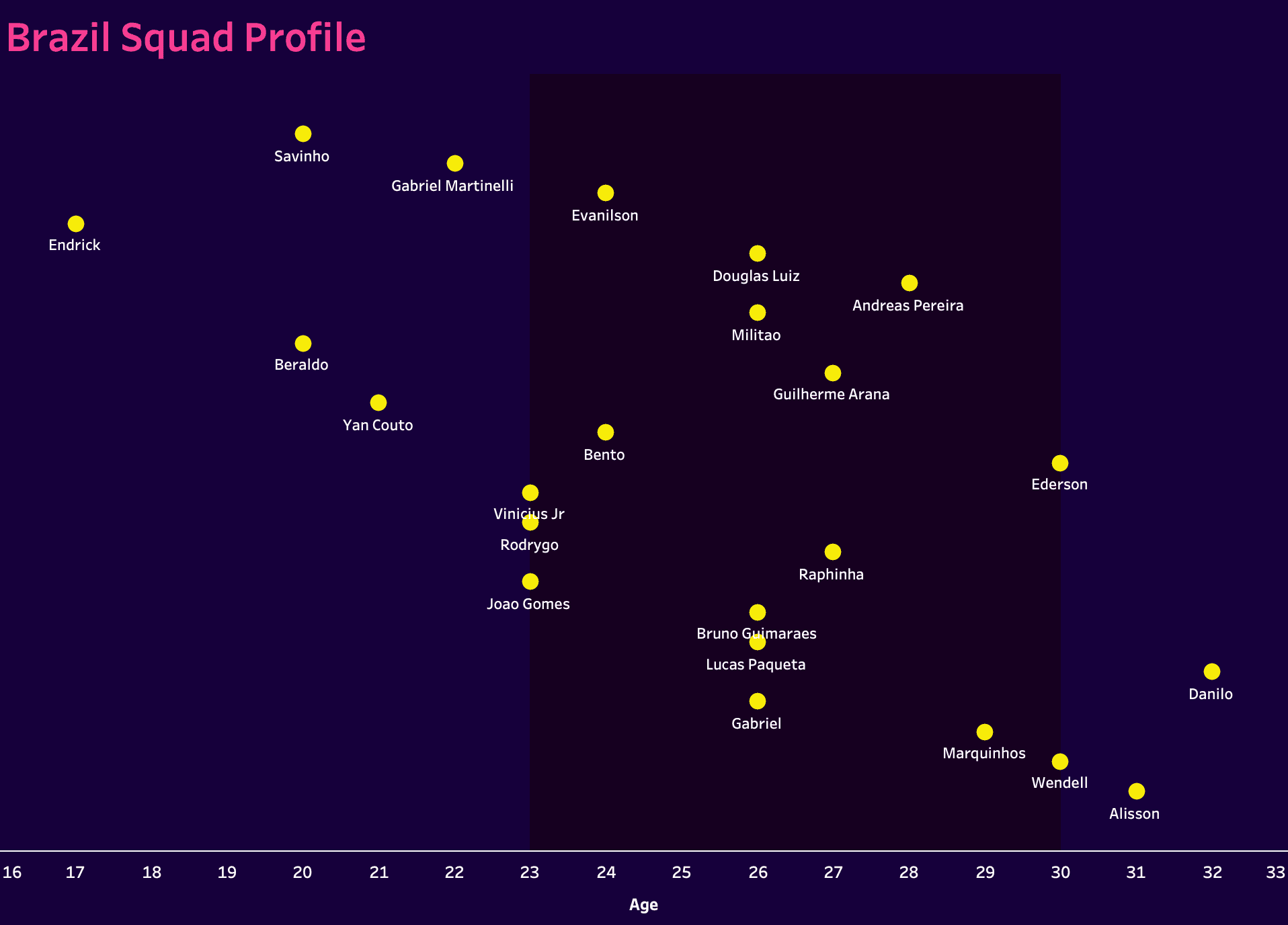
Although exciting, such a young squad does bring a level of inexperience.
Therefore, the defensive personnel are likely to be looked upon for guidance as the older members of the team.
Attacking phase
In the last calendar year, Brazil has been a strong possession-based side compared to other qualified nations for the upcoming Copa América.
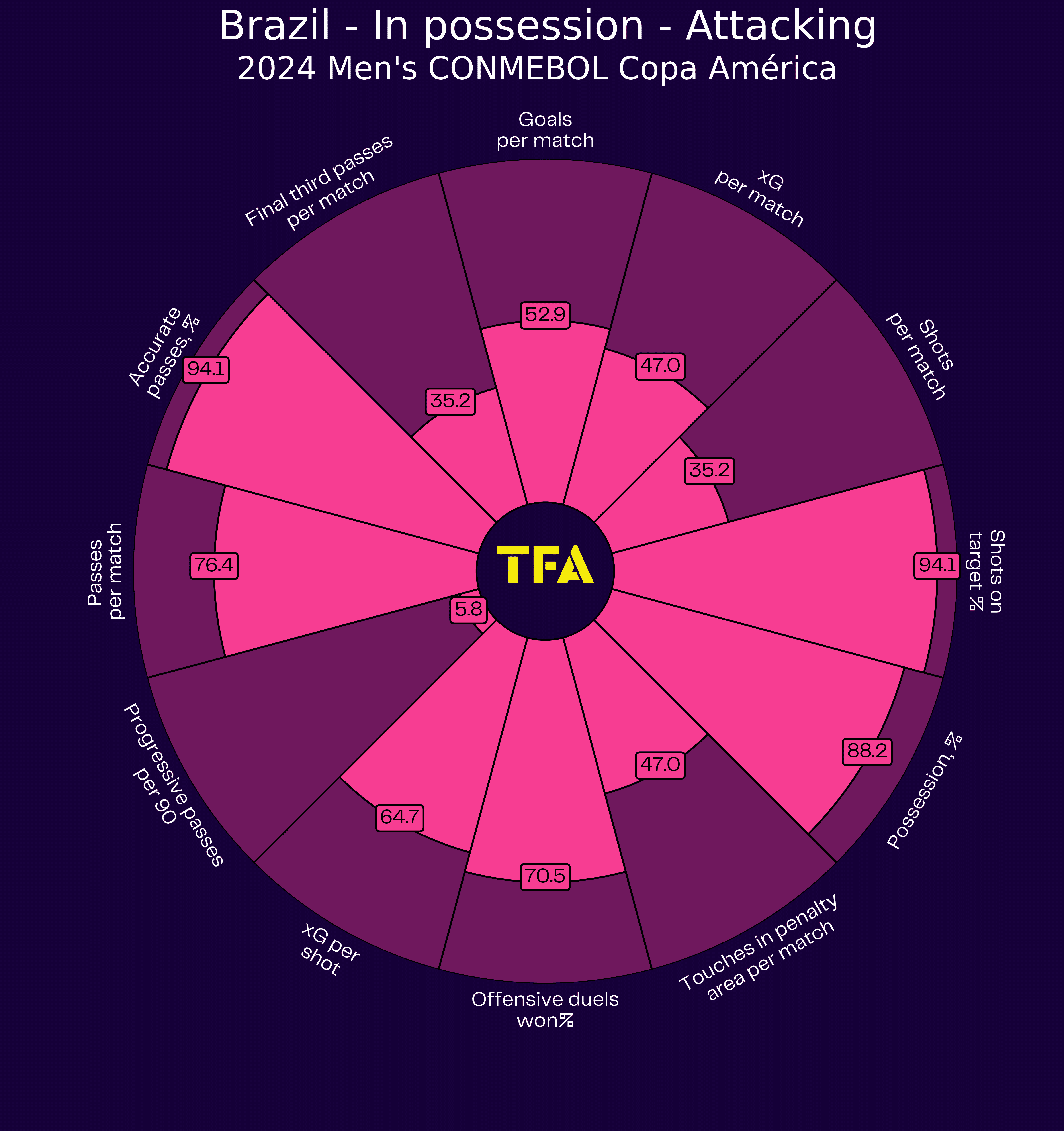
However, what is striking about the above graphic is that although Brazil tends to dominate play, they have often been quite counterproductive.
For example, despite being ranked in the top 12% for possession, their progressive passes per 90 are only in the 6th percentile.
This points to a side lacking creative ideas.
A look at their passing statistics from the past year shows that the majority of their passes are lateral per match, averaging 194 per game.
Brazil has a 94% pass accuracy for such passing exchanges, but this does highlight a team that, over the past year, has been more content to recycle possession rather than be productive with it.
The arrival of Dorival, though, signalled a change in their attacking outlet, exemplified by their less than 50% possession in their recent encounters against Spain and England.
Since the Brazilians’ arrival in the dugout, Brazil has been much more direct in attack, looking to exploit the pace in their forward line.
One of the forwards will often play off the last defender, and the South Americans are not careless in such play, being caught offside only once in the past two matches.
Whilst such a direct style facilitates effective counterattacking football, there is much more to this Brazil side than purely catching opponents on the break.
Brazil will vary in playing the ball long, but generally, they opt to play out from the back.
Their attacking build-up play consists of quick passing exchanges—sometimes one-touch passing combinations—looking to transition across the pitch with passing triangles.
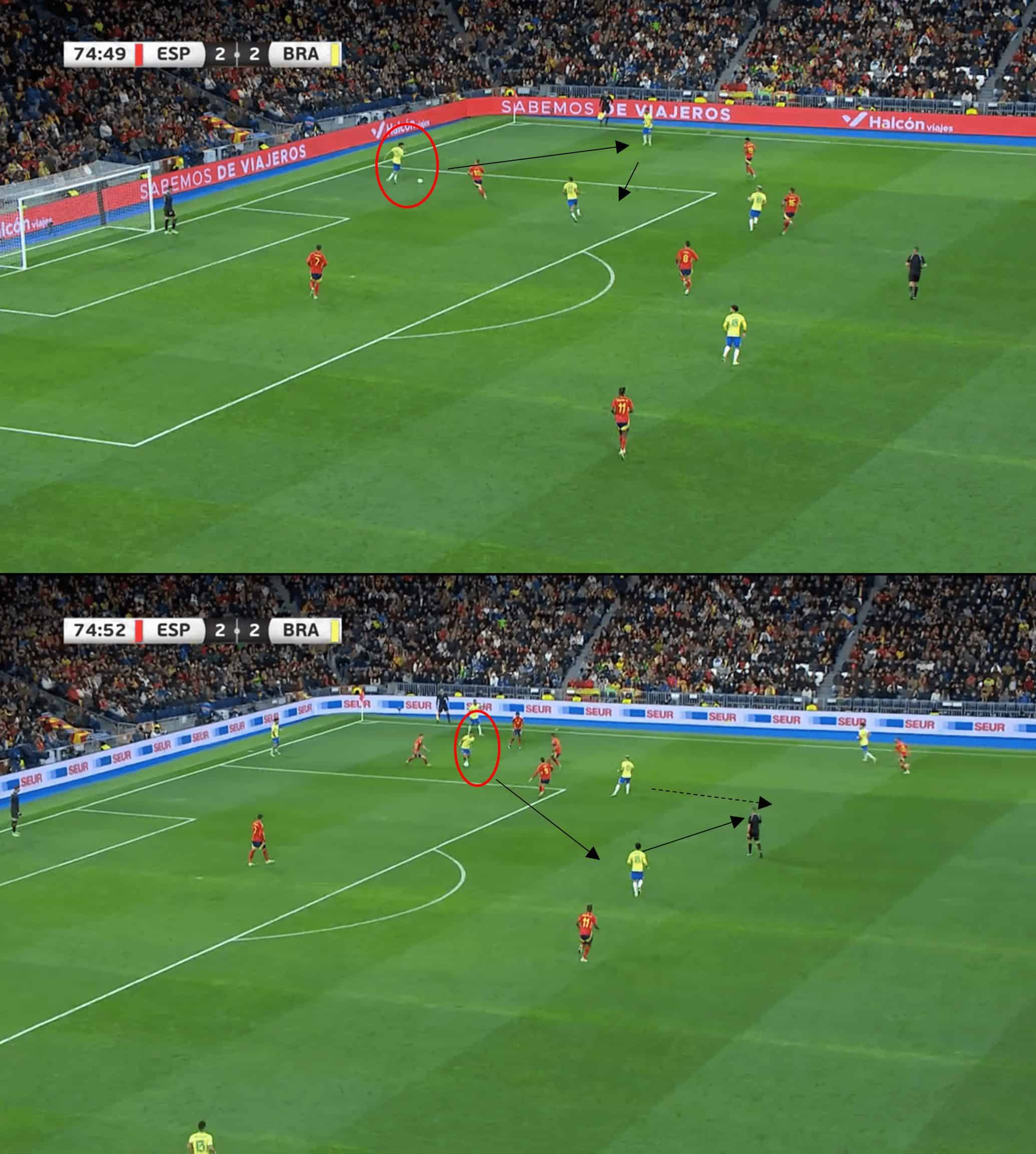
Speed is instilled into this Brazil side with their off-the-ball movements, always looking ahead for the next pass.
It summarises their positive approach of looking to be productive when they have the ball since Dorival’s arrival.
Another important aspect of Dorival’s attacking build-up is committing players in the offensive stages, notably left-back Wendell, who will often advance up the pitch, either on the left channel or invert inside, to give Brazil strength in numbers in the midfield.
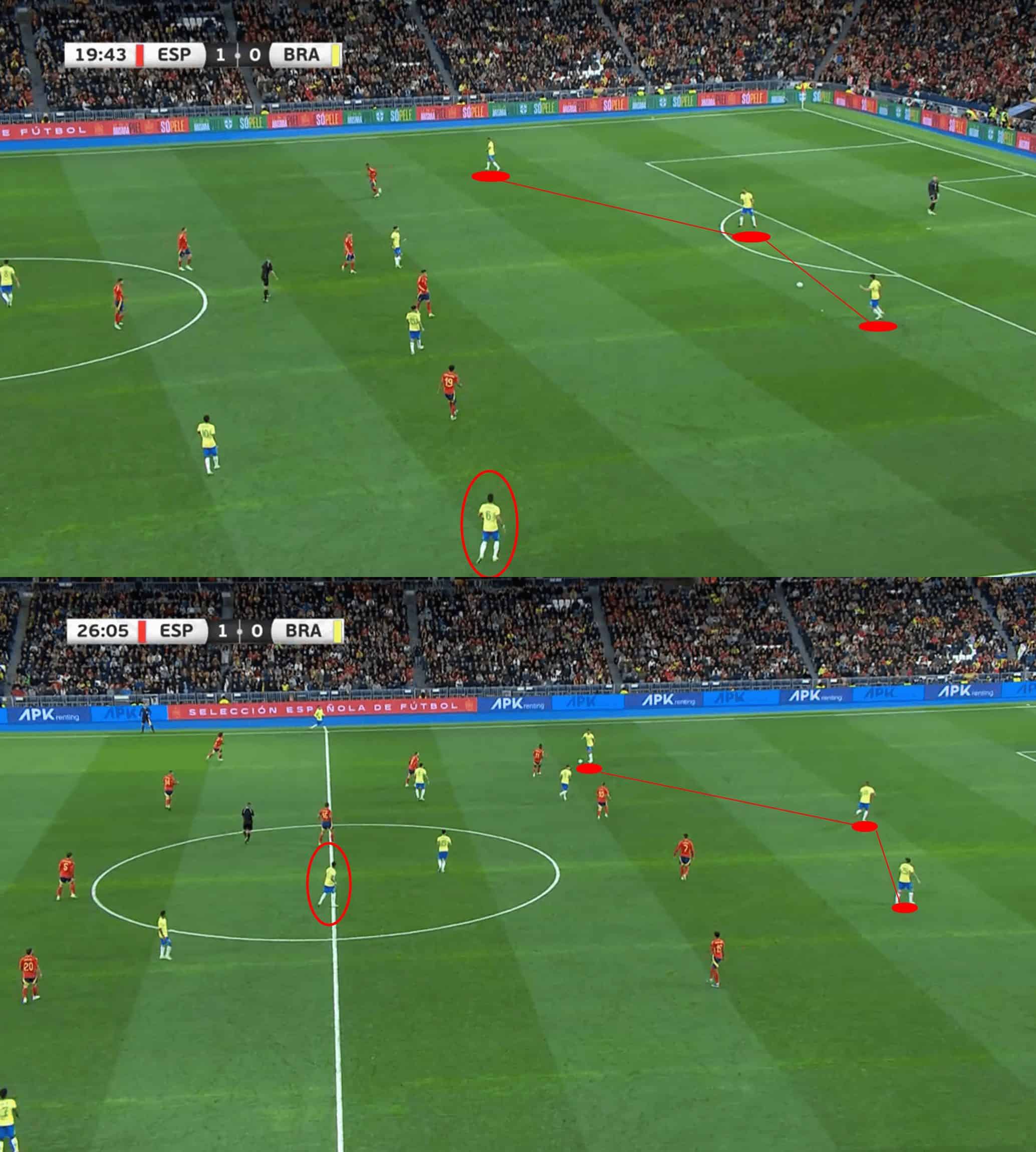
Wendell’s advanced positioning enables one of the midfield three, typically Paquetá, to drift further toward the forward line; this is a useful tactic to congest the middle of the pitch, where Brazil likes to initiate its attacking threat.
Despite committing players forward in attack, though, don’t expect this Brazil team under Dorival to stifle the opposition with crosses as their attacking outlet is more a product of penetrating carries into the area, typically from more central areas and the half-spaces from the likes of Rodrygo and Vinicius Jr.
Defensive phase
When it comes to the defending credentials, this has been the weak spot for Brazil of late.
In their World Cup qualifying group, only Bolivia and Peru have conceded more goals.
Their goals against tally per 90 ranks poorly compared to other nations who have qualified, as shown in the radar plot.
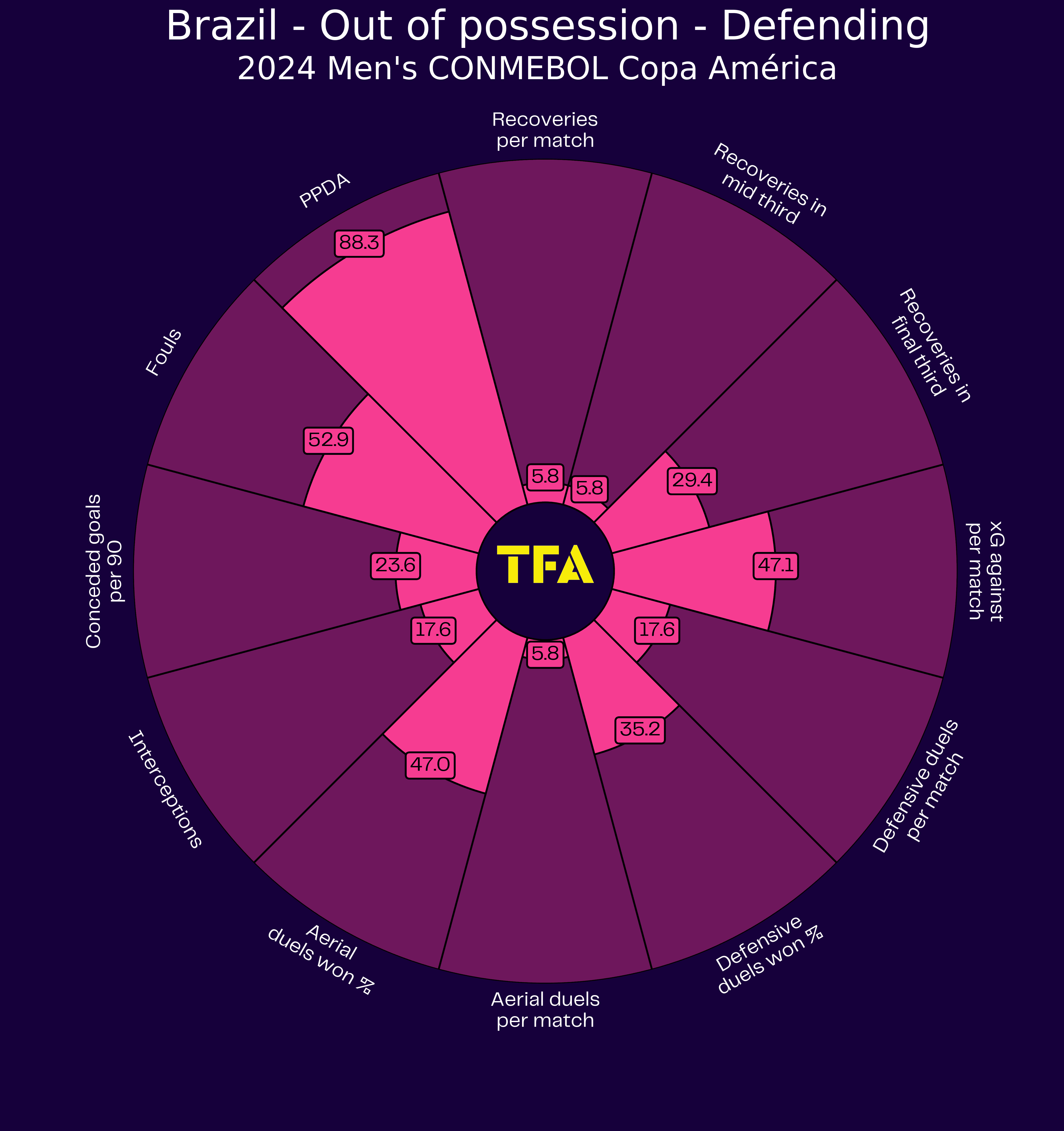
On a positive note, though, Brazil’s out-of-possession strengths lie in their high press, as indicated by their high PPDA rank.
Over the past year, Brazil has averaged an 8.97 PPDA value per match.
However, during the March friendlies under Dorival’s stewardship, the PPDA values increased by 62% on average.
Consequently, Brazil played with a much deeper defensive line against European opposition.
However, they have not entirely deserted their high-pressing principles since Dorival’s arrival.
Brazil has tended to form a 4-4-2 shape without the ball but is flexible in alternating personnel from the midfield to press further up the pitch to form a 4-3-3 shape out of possession, as exemplified below.
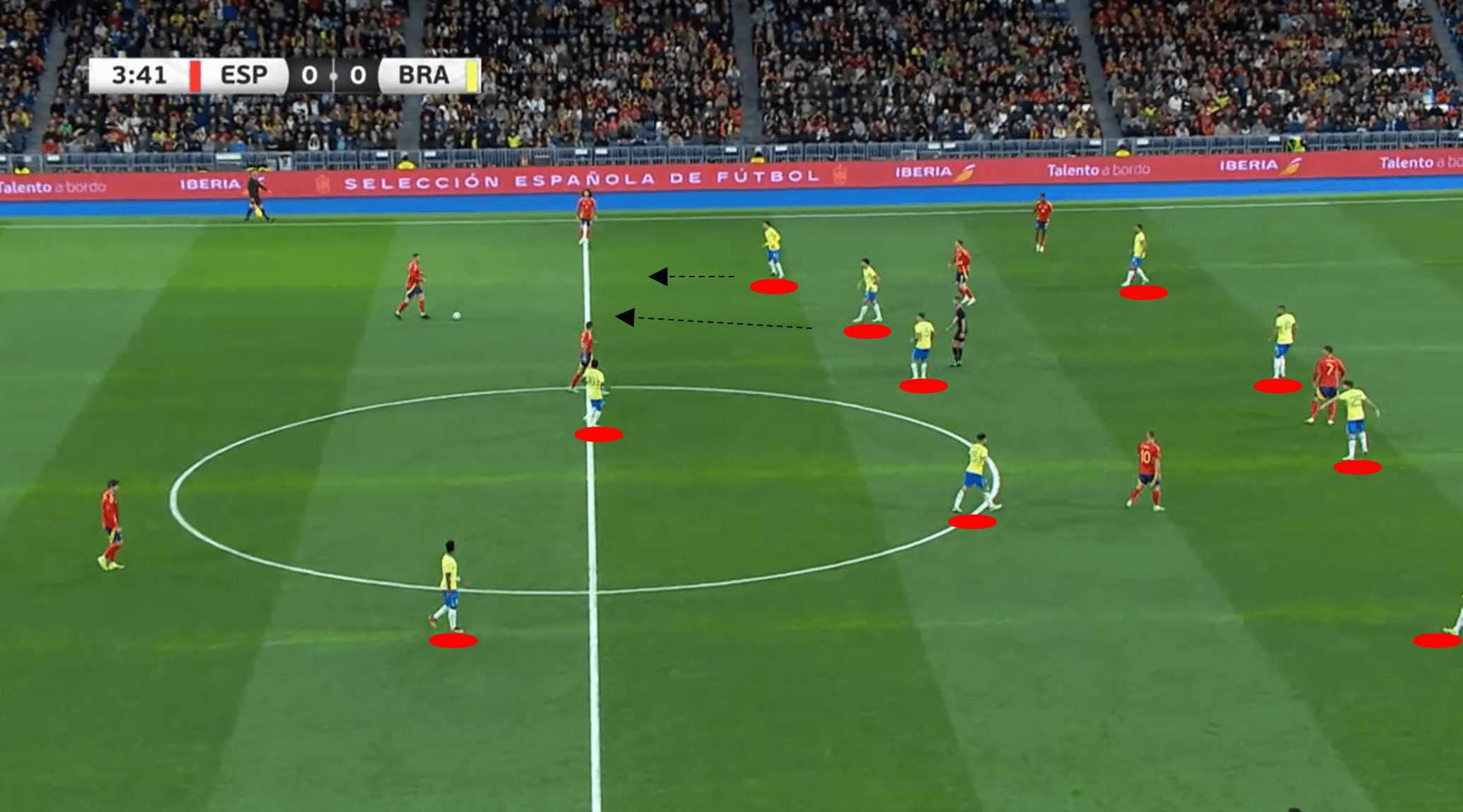
Given the right opportunity in the final third, though, the Seleção increase the intensity of their press.

As Spain plays the ball back to the goalkeeper, who then attempts a pass centrally, Rodrygo is able to intercept and lob the keeper to score.
The opposition will have to be mindful of the pace and quality in Brazil’s forward line, as any misplaced passes could very well be punished.
It may be too soon to judge Dorival’s preferred overall defending principles, though, as the deep defensive line may likely have been a response to the quality of the opposition.
Against lesser-ranked nations such as Group D competitors Costa Rica, Brazil may very well opt to play higher up the pitch and intensify their press in the opposition’s defensive third, as shown, on a more frequent basis.
Transitions
Brazil’s play has a quick tempo, which is effective when they launch counterattacks.
Opponents will be aware not to leave space at the back for the Brazil front line to exploit.
The quick nature of their play can be to their detriment, though, if caught in possession.
As a consequence, the South Americans are prone to committing fouls to halt opposition counterattacks.
Whilst this can disrupt the flow of matches to their advantage, it can leave them vulnerable to set pieces in dangerous positions.
Moreover, Brazil were guilty of conceding two penalties in their friendly against Spain.
It goes to show that the erratic nature during defensive transitions can lead to conceding cheap goals.
As we have already shown in this analysis, Brazil is likely to push left-back Wendell up when in possession, but opponents should look to exploit the space in the attacking right-hand channel this opens up.
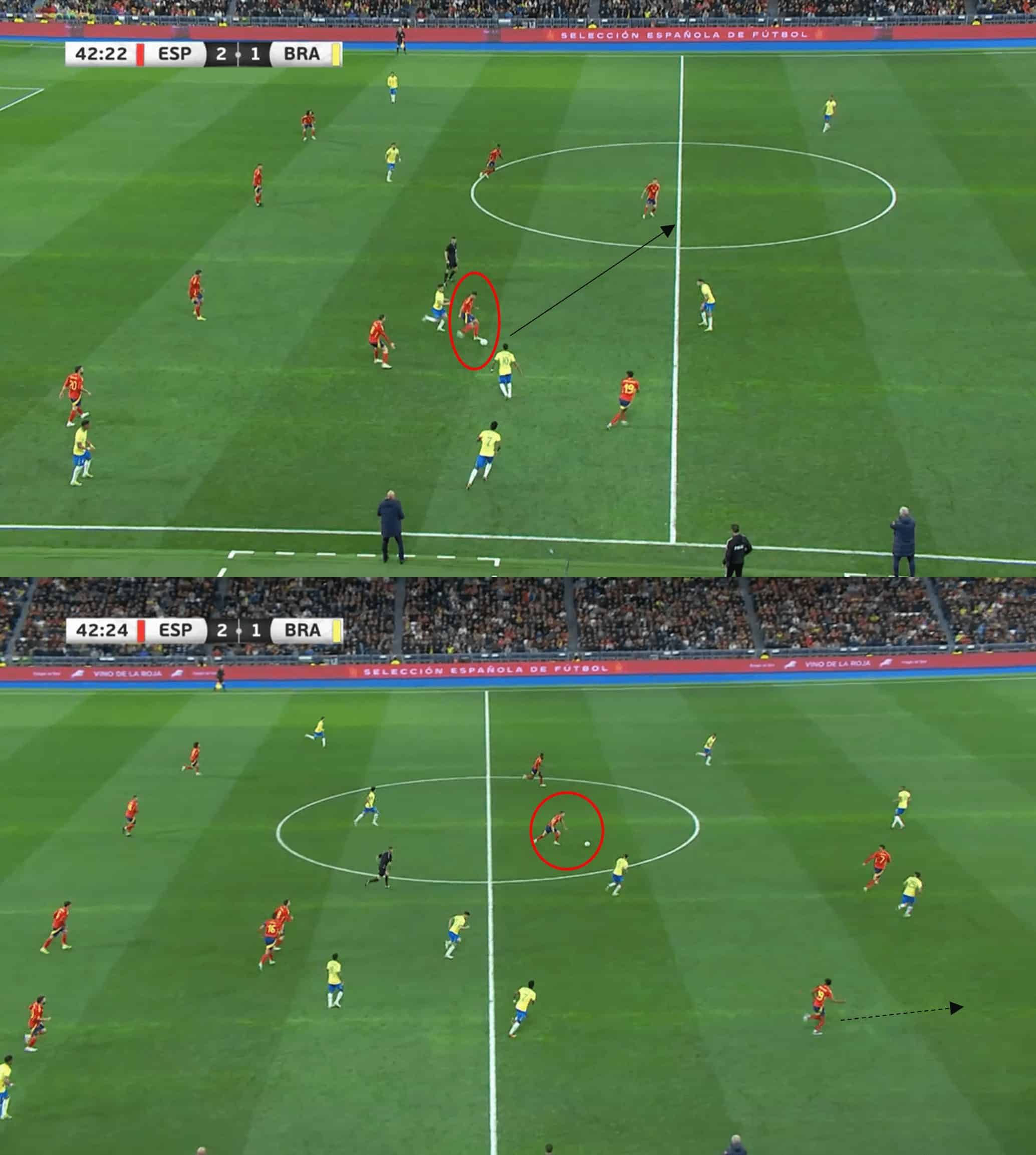
The match still shows that as Spain has retrieved possession, Wendell is out of position, leaving his opposite number with plenty of space on the right side to attack.
Although Spain was unable to make the most of this situation and didn’t notice the opportunity down this side, it serves as a warning to Brazil if opposing teams are able to counter.
Defenders
The weaker positions of Brazil’s starting XI are arguably the full-back positions, as both Danilo and Wendell lack pace.
Danilo typically plays as centre-back for Juventus, so whilst out of position in the general Brazil formation compared to his normal club role, it does prove useful for Dorival’s side when they switch to three at the back to facilitate Wendell’s playing higher up the pitch.
As we have already seen in this analysis, Wendell’s positioning could leave Brazil vulnerable on the break, but the Porto defender does rank in the top 25% of tier-two players for defensive positioning this season.
The left-back can’t afford to be complacent in this tournament.
Gabriel has been one-half of the Premier League’s tightest defence this season with Arsenal.
The defender ranks in the top 25% for percentage of defensive duels won this season compared to other top-tier left-sided centre-backs.
Marquinhos, on the other hand, ranks below the median for the same statistic as right-sided centre-backs.
The PSG defender is very comfortable in possession, though.
Given Brazil’s passing philosophy of quickly progressing play out from the back, Marquinhos will be crucial in advancing play forward.
The defender, like Gabriel, is not averse to dribbling possession towards the opposition half.
Both will be key instigators of Brazil’s forward movements but, crucially will need to be level-headed to help guide this squad through the tournament.
Midfielders
In parallel to his role at Newcastle, you would expect that Guimaraes will sit as the deeper of the midfield three to provide cover for the defensive line, but he will not shirk from playing further up the pitch, either.
This is in part due to the cover that will be provided by his midfield teammate, Gomes.
The young Wolves midfielder has impressed this campaign; his strengths lie in his defensive play.
Gomes has averaged winning 2.52 tackles per match and 2.28 tackles in the defensive third per match this season.
He ranks in the top five for such statistics in England’s top flight when factoring in players who have featured for at least five 90s.
West Ham’s Paquetá is expected to add a creative spark to this midfield three.
Although he typically plays on the left side of the Hammers’ midfield, he is given much more autonomy to roam between the midfield and attacking line on the right-hand side for Brazil.
His tactical flexibility will surely be an asset.
Forwards
Brazil has two of the world’s best at dribbling with the ball and driving towards the penalty area in Rodrygo and Vinicius Jr.
Their quick feet, both in and out of possession, make them the key players in this side’s attack, and they will be heavily relied upon in launching counterattacks.
The Galáctico duo rank as the top two players in La Liga for progressive carries per 90 and carries into the final third per 90 among all players to have featured at least five 90s.
In comparison to the same crop of players, they rank in the division’s top three for carries into the penalty area per 90.
There is no doubting how instrumental they are to this attack.
Although La Liga rival Raphinha is not as strong carrying the ball, he adds a lot in terms of attacking outlet and will notably be looking to carry through his assist-making at the domestic level to the international stage.
The forward has made nine assists for Barcelona, a number matched by another Brazil attacking option, Sávio, while at Girona.
There is some exciting competition for places in the forward three.
The changing of the guard up the top was exemplified in Dorival’s squad selection, opting for youngster Endrick over the more tried and tested Richarlison.
Endrick will be looking to showcase why Real Madrid has paid a reported €60 million for his services.
Although not a sure starter in this Brazil side, you would certainly expect him to get playing time and add to the pace in this forward line.
Endrick’s physical presence exceeds his young years, and he has already shown his clinical touch since Dorival’s arrival in the two friendlies, scoring twice despite an overall expected goal value of 1.01.
He may initially start as an impact sub this summer, but there is every chance he may become hard to drop.
Key Player
Whilst the forward line is likely to lead the plaudits for Brazil and is more than capable of producing moments of magic from seemingly nowhere, the Seleção’s progression in the U.S.
will largely depend on whether they can control the midfield battle.
Therefore, we have highlighted Guimarães as a key figure for the South Americans in this tournament.
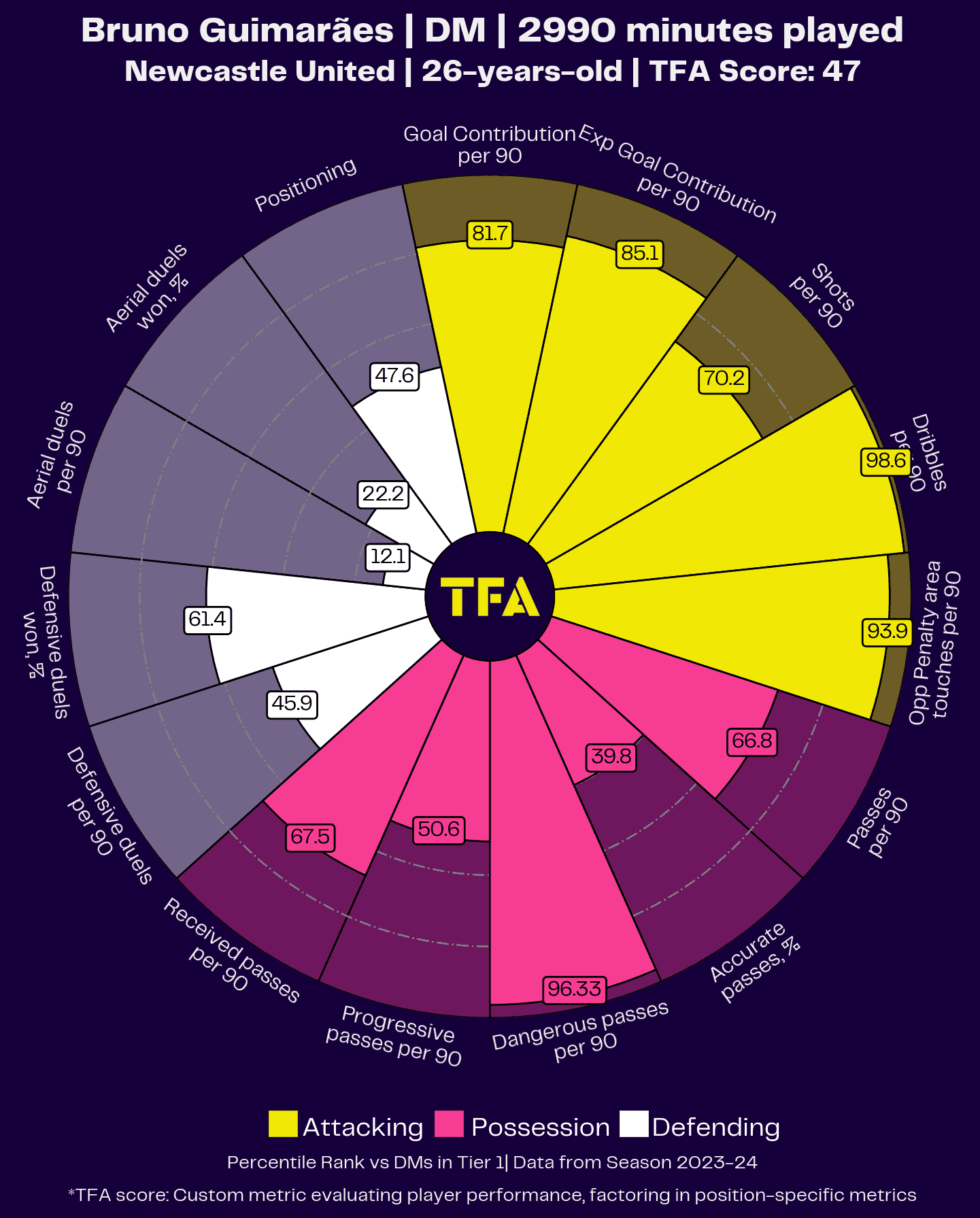
As the more experienced of the midfield three, the Newcastle man will be tasked with becoming the leader.
As the above radar shows, Guimarães has a strong influence from an attacking viewpoint despite typically starting in a deeper-lying defensive midfield role.
Moreover, if you consider the Brazilian’s rank for dangerous passes per 90, he certainly has it within him to be an influence in Brazil’s progressive play, looking to carve out opportunities with line-breaking passes.
The above radar does show that Guimarães has surprisingly not fared as well compared to his peers for defensive attributes this season.
There is no doubt about Guimarães’ quality, though; his overall dominance on a football pitch has led to rumours that he may be heading towards the exit door from Tyneside in pursuit of Champions League football this summer.
Copa América could prove to be a big tournament for the midfielder, and Brazil will certainly be hoping it will be to their advantage.
Tournament prediction
Brazil may not be in the finest form heading into this tournament, but it would be folly to rule them out of being amongst the final contenders.
First, though, they must negotiate their qualifying group, and there have been signs of optimism since Dorival’s arrival.
Rivals Paraguay possess strong defending credentials but struggle for goals.
You would expect that it would be Brazil and Colombia leading the way in this group, and Brazil just edging their South American rivals for the top spot despite losing their most recent encounter.
The Copa América serves as the perfect opportunity for Brazil to remind the footballing world of the quality they possess.

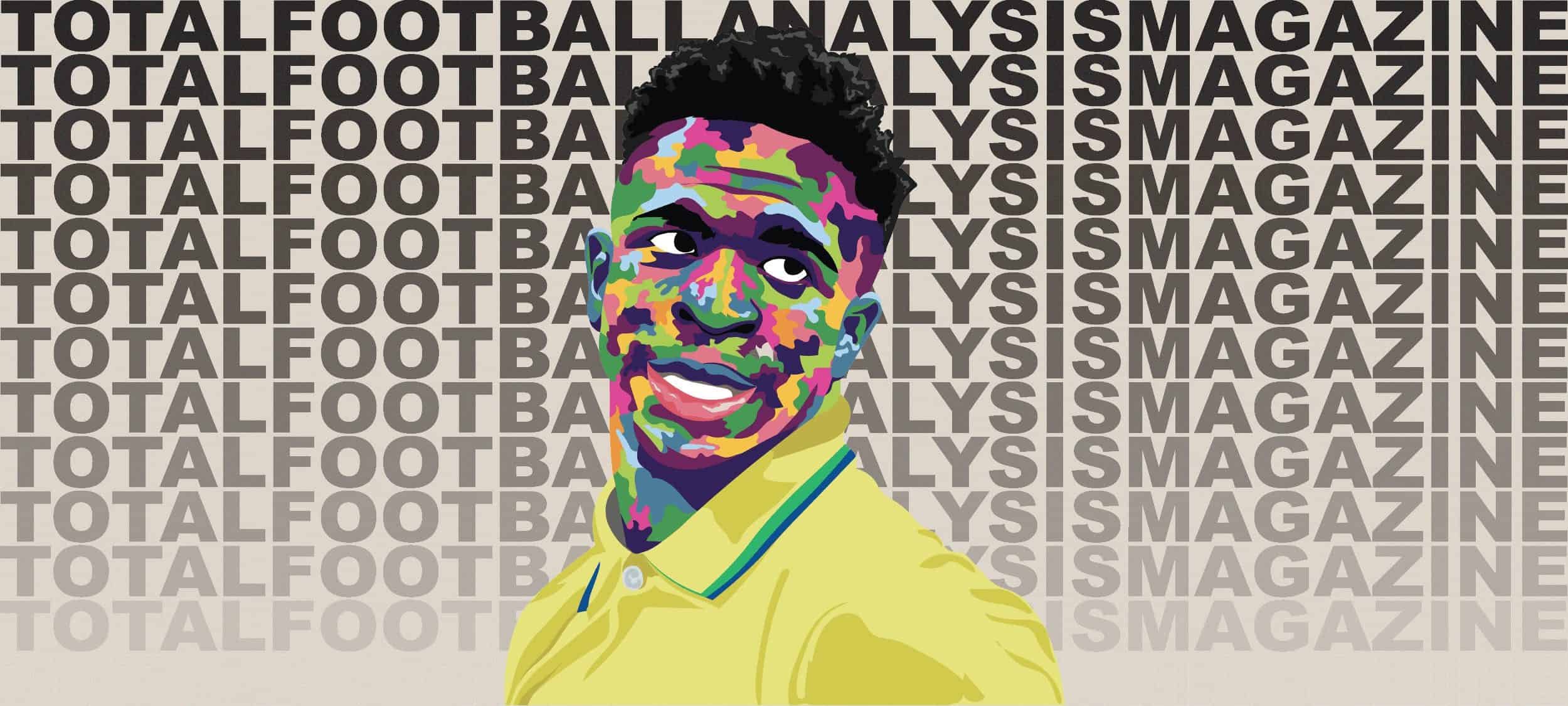




Comments